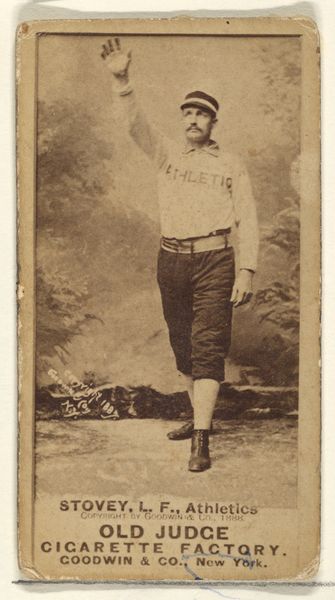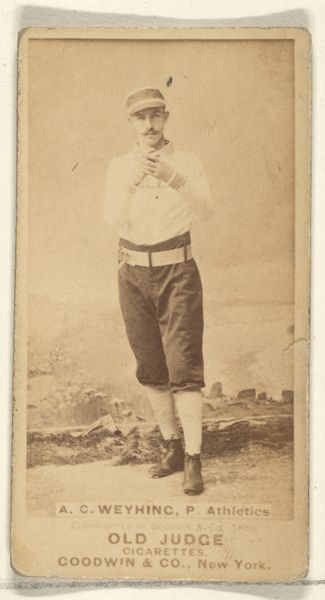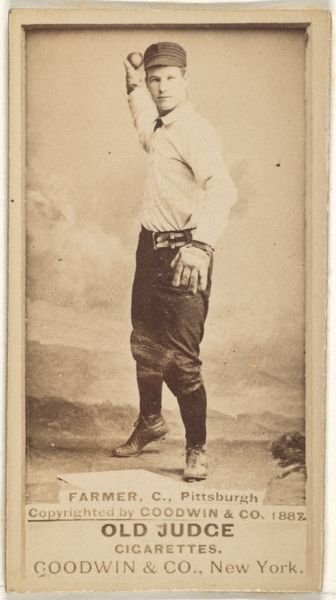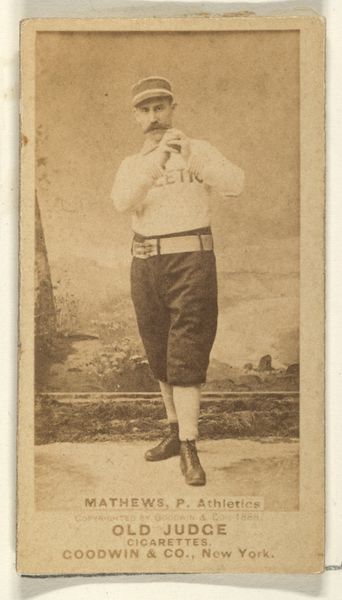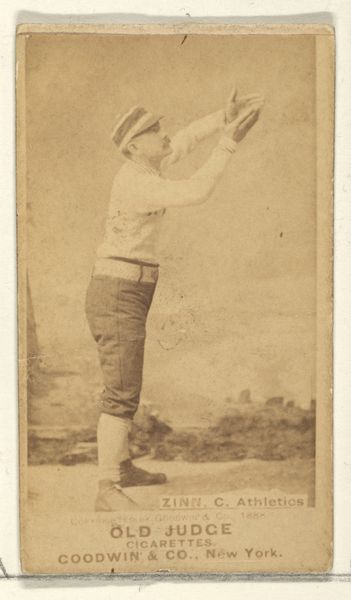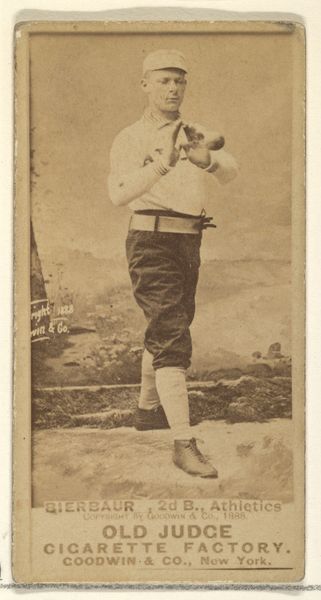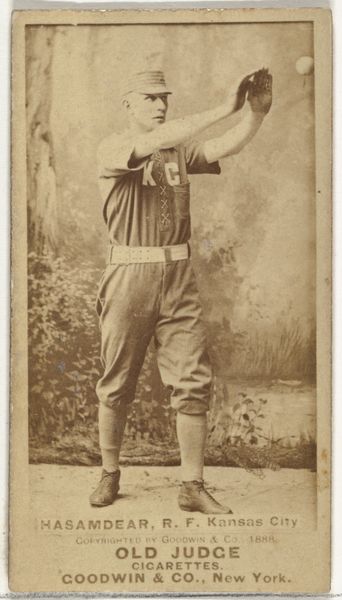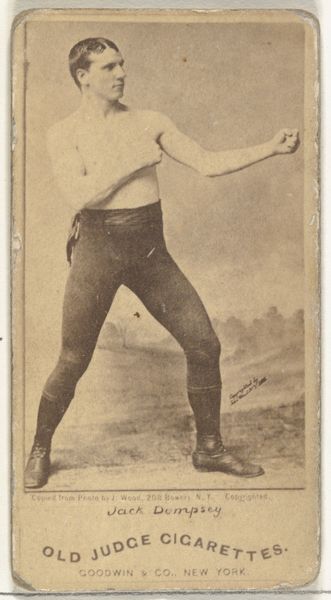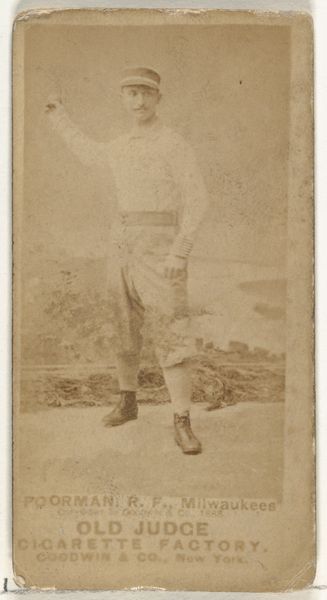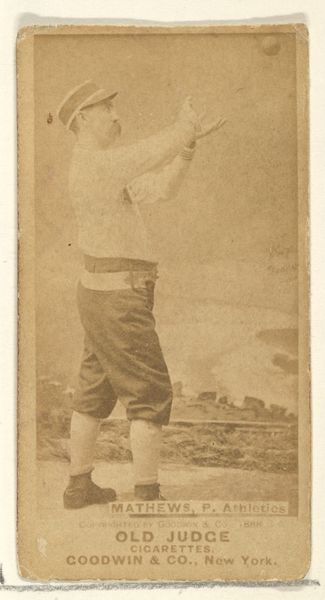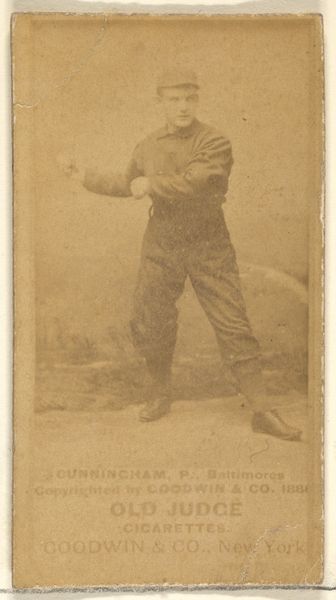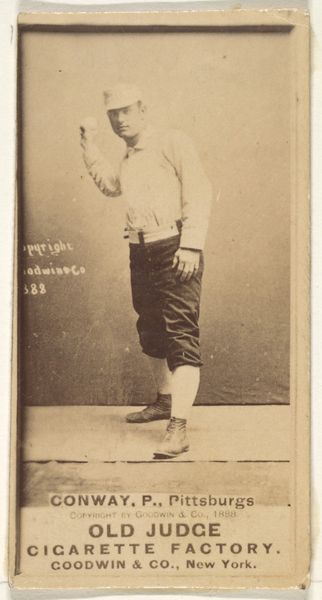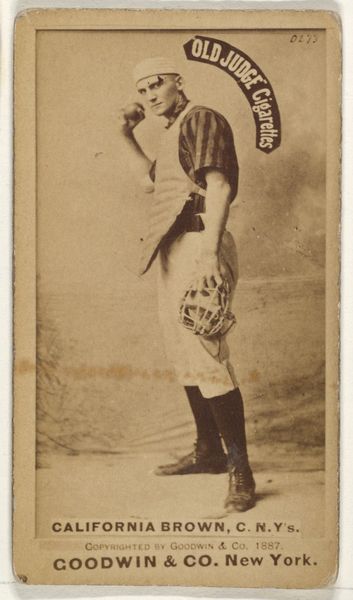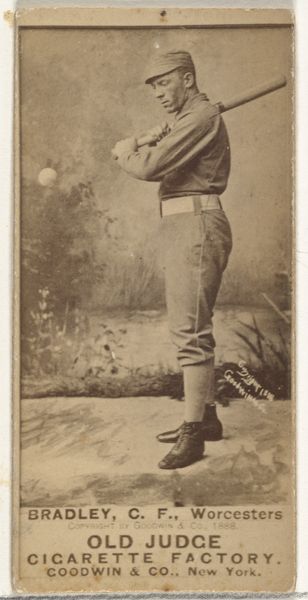
Stovey, Left Field, Philadelphia Athletics, from the Old Judge series (N172) for Old Judge Cigarettes 1887
0:00
0:00
drawing, print, photography
#
portrait
#
drawing
# print
#
baseball
#
photography
#
men
#
athlete
Dimensions: sheet: 2 11/16 x 1 3/8 in. (6.9 x 3.5 cm)
Copyright: Public Domain
Editor: Here we have a photographic print from 1887, titled "Stovey, Left Field, Philadelphia Athletics, from the Old Judge series," produced by Goodwin & Company. The image features a baseball player, Stovey, but what strikes me is its dual existence: it’s both a portrait and a promotional item for cigarettes. How do you interpret this blending of purposes? Curator: It's crucial to consider how this image functions within the visual culture of the late 19th century. Think about it – the mass production of photographs coincides with the rise of both professional sports and the tobacco industry. Cigarette cards became a powerful marketing tool. Featuring baseball players elevated both the sport and the brand, associating athleticism and perhaps even a certain "coolness" with smoking. How might this interplay shape public perception of sports figures and consumerism at the time? Editor: So, it’s less about art for art’s sake and more about art serving a commercial agenda? Did the players themselves have any agency in this? Curator: That’s right. The power dynamics are really interesting. Players likely had limited control over the use of their image. Their likeness became a commodity, reinforcing ideas of celebrity culture tied to market forces. Consider the ethical implications of using athletes, figures often admired by youth, to promote a product known to be harmful. Does that change your perception of this image? Editor: Definitely. I initially saw it as a simple baseball card, but now I recognize its role in a larger network of commerce and influence. Thanks for unpacking the historical layers behind such a seemingly straightforward portrait. Curator: My pleasure! Looking beyond the immediate image helps us understand how art objects participate in shaping cultural values and power structures. It invites us to question whose stories are told and how.
Comments
No comments
Be the first to comment and join the conversation on the ultimate creative platform.
